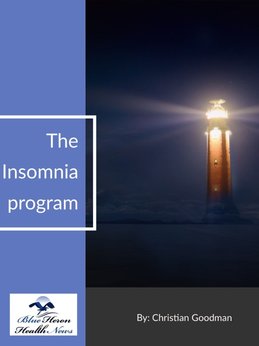
The Insomnia Program™ By Christian Goodman This program has been created by Christian Goodman, a natural health expert and sufferer of insomnia. He has used an audio program to let your fall sleep with the help of a bit of a hypnotic effect on your body.
How is a sleep study performed?
A sleep study, also known as polysomnography (PSG), is a comprehensive test used to diagnose sleep disorders by recording various physiological functions while you sleep. It is typically performed in a sleep lab or clinic but can also sometimes be done at home using portable equipment. Here’s a step-by-step guide to how a sleep study is performed:
1. Preparation Before the Sleep Study
- Pre-Study Instructions: You may be asked to avoid caffeine or alcohol for the day of the study as they can interfere with sleep patterns. You might also be advised to wash your hair (without conditioner or styling products) to ensure proper sensor attachment.
- Medication Guidance: Your doctor may ask you to continue taking your regular medications or may adjust them temporarily before the study, depending on the condition being evaluated.
- Arriving at the Sleep Center: The study is often conducted overnight in a sleep lab or hospital setting. You’ll usually arrive at the sleep center in the evening, where a technician will explain the procedure and get you settled in a private, comfortable room.
2. Sensor Placement
The technician will place various sensors on your body to monitor different functions during sleep. These sensors do not cause pain and are non-invasive. The setup usually takes around 30-60 minutes. The sensors include:
- Electroencephalogram (EEG): Electrodes are placed on your scalp to monitor brain waves and stages of sleep.
- Electrooculogram (EOG): Electrodes near the eyes track eye movements, which help identify different sleep stages, including REM (rapid eye movement) sleep.
- Electromyogram (EMG): Electrodes on the chin and legs measure muscle activity and help detect conditions like restless leg syndrome or REM sleep behavior disorder.
- Electrocardiogram (ECG/EKG): Monitors heart rate and rhythm.
- Breathing Sensors: Belts are placed around your chest and abdomen to track breathing patterns and effort. A nasal cannula or sensors near your nose and mouth record airflow.
- Pulse Oximeter: A small sensor is placed on your finger to monitor blood oxygen levels, which helps identify breathing problems like sleep apnea.
- Snore Microphone: A microphone may be placed near your throat or on the bed to detect snoring.
- Video and Audio Monitoring: In many cases, a camera and microphone in the room record body movements and sounds during sleep. This helps the sleep technician observe any unusual behaviors or disruptions.
3. The Sleep Monitoring Process
- Once all sensors are attached, you will be asked to try to sleep as normally as possible. The sleep center room is usually designed to be comfortable and quiet, resembling a bedroom rather than a hospital room.
- The sensors and monitors transmit data to a nearby room where sleep technicians monitor your physiological responses in real-time throughout the night. If necessary, they can enter the room to adjust sensors or help if you need assistance.
4. What is Monitored During the Study?
The primary functions monitored during a sleep study include:
- Brain Activity: EEG readings help determine your sleep stages (light sleep, deep sleep, and REM sleep) and whether you are cycling through these stages properly.
- Eye Movements: EOG tracks your eye movements, which are important for identifying REM sleep.
- Muscle Activity: EMG measures muscle activity, which can indicate movements during sleep, such as leg movements or twitching.
- Breathing Patterns: Breathing sensors monitor airflow and chest/abdominal movements to identify conditions like sleep apnea (pauses in breathing) or other breathing-related disorders.
- Oxygen Levels: The pulse oximeter checks for drops in blood oxygen, which often happens during episodes of sleep apnea.
- Heart Rate and Rhythm: EKG monitors for heart-related abnormalities during sleep.
5. Sleep Study Duration
- The sleep study usually lasts for the duration of a typical night’s sleep (about 6-8 hours), though some studies can be shorter or extended based on specific needs.
- If the study is being performed for conditions like sleep apnea, the technician may wake you during the night to fit a continuous positive airway pressure (CPAP) mask. This part of the study, known as a CPAP titration, helps determine the correct level of air pressure to keep your airways open during sleep.
6. Post-Sleep Study
- The next morning, the technician will remove the sensors, and you can return home. The collected data is analyzed by sleep specialists and typically reviewed by a sleep physician.
- Results and Follow-up: The analysis may take a few days to a week. Your doctor will review the results with you and explain whether any sleep disorders were identified (e.g., sleep apnea, restless leg syndrome, insomnia, narcolepsy). Based on the findings, they may recommend treatment options, such as CPAP therapy, lifestyle changes, or medication.
7. Home Sleep Study (Portable Sleep Monitoring)
In some cases, especially when diagnosing conditions like obstructive sleep apnea, a simpler version of the sleep study can be performed at home. A home sleep test typically uses fewer sensors and is designed to monitor breathing patterns, airflow, and oxygen levels while the patient sleeps in their own bed. This option is less comprehensive than in-lab polysomnography and is not suitable for diagnosing more complex sleep disorders.
Key Information Monitored in a Sleep Study
- Sleep stages: Time spent in different sleep stages (REM, deep sleep, light sleep).
- Breathing patterns: Identifies apneas, hypopneas, and breathing irregularities.
- Oxygen levels: Detects drops in oxygen, which could signal sleep apnea.
- Heart rate: Monitors changes in heart rhythm during sleep.
- Body movements: Identifies restless legs or periodic limb movements during sleep.
Conclusion
A sleep study is a detailed, non-invasive procedure that provides valuable insights into your sleep patterns and identifies potential sleep disorders. The results of the study help doctors develop an effective treatment plan to improve sleep quality and address any diagnosed conditions.

The Insomnia Program™ By Christian Goodman This program has been created by Christian Goodman, a natural health expert and sufferer of insomnia. He has used an audio program to let your fall sleep with the help of a bit of a hypnotic effect on your body.